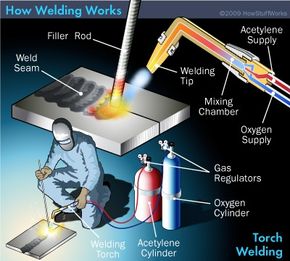Developing a Welding WPS: Step-by-Step Recommendations for Professionals
Developing a Welding WPS: Step-by-Step Recommendations for Professionals
Blog Article
Mastering Welding WPS Requirements: Ideal Practices and Techniques for Top Quality Welds
In the world of welding, understanding Welding Treatment Specification (WPS) criteria is an essential element that directly affects the high quality and integrity of welds. Sticking to these requirements ensures uniformity and dependability in welding outcomes. Nevertheless, achieving quality in welds surpasses just recognizing the standards; it entails executing ideal methods and strategies that raise the craft to a level of accuracy and skill that establishes apart the average from the remarkable. As we browse through the details of welding WPS requirements, revealing essential understandings and techniques for attaining top-tier welds will be vital for welders seeking to master their craft and produce welds that stand the test of time.
Recognizing Welding WPS Requirements

Understanding WPS requirements is essential for inspectors, welders, and engineers associated with welding procedures. By following WPS guidelines, welders can create welds that fulfill the called for mechanical homes and architectural integrity. Inspectors depend on WPS documents to validate that welding treatments are being followed correctly and that the resulting welds are of premium quality. Engineers utilize WPS requirements to create welding treatments that make certain the resilience and reliability of welded structures.


Important Tools for High Quality Welds
Mastering welding WPS requirements is essential for welders to effectively utilize the important devices needed for generating top quality welds. One of the most essential tools for high quality welds is a welding device. The kind of welding equipment required relies on the welding procedure being made use of, such as MIG, TIG, or stick welding. Welding headgears are likewise vital to secure the welder's eyes and face from stimulates, warmth, and UV radiation. Additionally, welding gloves made of durable and heat-resistant materials safeguard the hands from burns and injuries. Magnets and clamps aid hold the work surfaces with each other securely during the welding procedure, making certain specific and exact welds. Wire brushes and chipping hammers are essential for cleansing the weld joint prior to and after welding to eliminate any impurities that can impact the high quality of the weld. Finally, a measuring tape and angle grinder serve devices for making sure proper alignment and preparing the work surfaces for welding.
Secret Methods for Welding Success
To achieve welding success, one should grasp the find out here now vital techniques vital for producing high-grade welds. One important strategy is preserving the proper arc size. Maintaining the electrode at the optimal distance from the work surface is important for producing strong, consistent welds. In addition, controlling the travel speed is paramount. Relocating as well rapidly can cause insufficient infiltration, while relocating as well slowly can bring about too much heat input and prospective defects. Appropriate adjustment of the electrode angle is another crucial strategy. The angle at which the electrode is held can affect the bead form and penetration of the weld. Additionally, making certain constant weapon angle next page and instructions of travel is important for uniformity in the weld grain. Last but not least, maintaining a stable welding and a constant hand setting throughout the procedure is vital to accomplishing accuracy and uniformity in the welds. By grasping these vital methods, welders can boost the quality of their work and accomplish welding success.
Ensuring Conformity With WPS Criteria

Moreover, welders must undertake training to familiarize themselves with the WPS criteria appropriate to their work. Regular audits and evaluations should be conducted to confirm that welding activities align with the suggested WPS guidelines. In addition, preserving in-depth documents of welding specifications, devices calibration, and evaluation outcomes is vital for demonstrating conformity with WPS requirements - welding WPS. By diligently adhering to WPS requirements, welders can guarantee that their job satisfies the needed top quality degrees and adds to the general success of the welding job.
Troubleshooting Common Welding Issues
When encountered with typical welding problems, recognizing the origin is vital for reliable troubleshooting. One prevalent issue is the visibility of porosity in welds, often triggered by impurities such as rust, dampness, or oil. To resolve this, making sure appropriate cleansing of the base steel prior to welding and making use of the appropriate shielding gas can substantially lower porosity. Another concern often encountered is absence of blend, where the weld stops working to correctly bond with the base product. This can stem from poor warmth input or inappropriate welding technique. Changing specifications such as voltage, cord feed speed, or take a trip rate can assist boost combination. In addition, distortion, breaking, and spatter prevail welding difficulties that can be alleviated with appropriate joint prep work, constant warm control, and selecting the suitable welding consumables. By extensively understanding these typical welding problems and their root triggers, welders can successfully troubleshoot issues and achieve top quality welds.
Final Thought
Finally, understanding welding WPS standards needs an extensive understanding of the standards, using important devices, and executing vital techniques for effective welds. Making certain conformity with WPS requirements is vital for generating quality welds and preventing usual welding problems. By adhering to finest practices and methods, welders can attain consistent and reliable results in their welding tasks.
In the world of welding, grasping Welding Procedure Spec (WPS) requirements is a critical component that directly influences the high quality and integrity of welds.When delving into the realm of welding practices, an essential element to comprehend is the relevance and details of Welding Treatment Spec (WPS) criteria. WPS standards offer an in-depth standard for welding operations, guaranteeing consistency, high quality, and safety in the welding procedure. The kind of welding equipment required depends on the welding procedure being made use of, such as MIG, TIG, or stick welding.Achieving welding success via the proficiency of essential techniques demands a complete understanding and adherence to Welding Procedure Spec (WPS) criteria.
Report this page